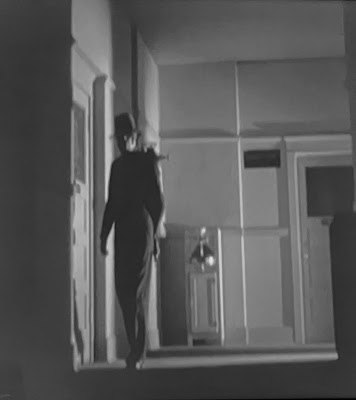In July 2014 I posted an item on this blog, "Hillman Hospital and How It Became UAB." I recently came across the article below published in the May 3, 1903, issue of the Birmingham Post-Herald just before Hillman opened. The piece is full of fascinating details about this early city hospital, which replaced a 100-bed facility that had burned in 1894. Various temporary quarters were used until Hillman opened for paying patients on June 16, 1903, the day after a reception for local visitors.
Groundbreaking ceremonies had taken place on May 2, 1902; a year was required to build the facility. The article declares medical advances "make the hospital one of the great institutions of today...The charity hospital is in a class alone. No other philanthropic institution is comparable to it. The Hillman hospital is a charity hospital" and will be to Birmingham what Bellevue is in New York." Birmingham Medical College, which had opened a new building next door, provided most of the hospital's medical staff.
About $60,000 was spent to build the hospital, which was four stories high of red brick and white stone. The building was fireproof and heated by steam; it featured electrical elevators, gas and electricity lighting and steam heat. The interior finish was native pine, and the bathroom and operating room floors were Venetian mosaic. Hillman had room for about 98 patients.
The basement held clinics, dispensary, physician offices, laboratories, the laundry, various storerooms, and the boiler and fuel room. On the first floor were the nurse superintendent and resident physician offices, reception room, six private rooms, and two large wards. Six more private rooms, two more adult wards and a large children's room with sunlight and toys were located on the second floor.
On the third floor could be found the surgical amphitheater with seating for 80 students, a private operating room and sterilization and anesthesia rooms. Also located there were five more private rooms and two wards for surgical patients. The top floor had a kitchen with dumb waiter connection to the other floors. Also found there was a dining room, nurse's dormitory and six private rooms.
The article includes extensive quotes from the newly-hired superintendent of nurses at Hillman, Miss Nannie Boyce Hamilton, "one of the best equipped young women in the profession. She has diplomas from the famous hospitals of the north, and to her experience and training she adds a wonderful executive and business ability. she is a very remarkable young woman."
Miss Hamilton praised the plainness of Hillman Hospital furnishing which mad cleanliness much easier, "affording no lurking place for dust." She notes the presence of a study and sitting room for nurses' use in their time free from patient care or classes. Hamilton hoped to establish a nurses' library, and pointed to the amphitheater, private operating rooms and large children's ward as important features.
Hillman was a charity hospital, but did take paying patients who were the ones able to afford private rooms. Four graduate nurses and eight student nurses cared for those private patients. Hillman Training School for Nurses graduated seven students in 1903.
All of these wonderful facilities and staff did not prevent financial problems that Hillman soon developed. By May 1907 Jefferson County agreed to assume the outstanding $9000 debt on the property, and under it's control the hospital continued to admit charity patients.
I did a bit of research on Annie Kendrick Walker and Nannie Boyce Hamilton, but found very little. Walker did publish two family histories, Memoirs of the Graham Family [1908] and Old Shorter Houses and Gardens [1911]. On March 24, 1900, she had published a profile of popular novelist Mary Johnston in the New York Times; Johnston lived for a period Birmingham.
Hamilton did not remain at Hillman for too many years. The Holley book cited below notes that the nursing superintendent at Hillman, a different woman, remained in that position in 1907 when Jefferson County took over.
Further Reading
Holley, Howard L. A History of Medicine in Alabama [1982]
Holmes, Jack D.L. A History of the University of Alabama Hospital [1974]
Wright AJ. Hillman Hospital. Hektoen International spring 2015
Source: Views of Birmingham, 1908












































